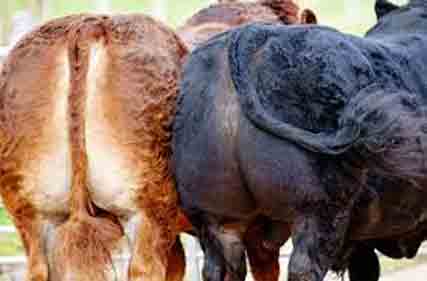
Limousin stamps its characteristics on other breeds when used in crossbreeding programs, especially its superior carcase characteristic
The Australian Limousin Breeders’ Society is celebrating the 50th anniversary of Limousin in Australia and New Zealand with a show on August 11.
The Limousin breed originated in a region of central France – rugged, granite country – where the summers are hot and winters are severe. The documented history of Limousin goes back more than 15,000 years to an area surrounding the French city of Limoges where rough cave paintings showing the characteristics of the breed have been discovered and carbon dated.
Throughout the 50 years of Limousin in Australia, Limousin breeders have been proactive in breed advancement to keep step with changing market demands and social responsibilities.
The Limousin breed is one of the fastest growing influences on the Australian cattle market today with strong competition for Limousin infused cattle in the supply chain.
The benefits of the very heritable high yield, efficient finishing to market specifications, eating quality, easy calving and easy to handle characteristics of Limousin cattle is recognised as a positive effect on the bottom-line at all stages of the supply chain. Limousin bloodlines are boosting profits in a range of commercial cattle enterprises across the country thanks to improved carcase attributes and hybrid vigour.
These attributes are largely a result of the F94L gene (a mutated myostatin gene that has a positive effect on carcase traits and eating quality) sometimes referred to as the ‘Limousin Advantage Gene’.
This gene is largely unique to Limousin cattle and is very heritable within crossbred breeding programs. Limousin stamps its characteristics on other breeds when used in crossbreeding programs, especially its superior carcase characteristics. Limousin crossbred steers/heifers:
- Have high dressing percentages of 58–63 percent.
- Have high meat to bone ratios and low waste in processing. Yields of up to 80% of saleable meat are not uncommon.
- Produce meat that is finely textured, tender and low in saturated fats and cholesterol. It is said to be genetically trimmed.
- Have above average feed conversion rates and there is evidence to suggest the ratio of methane gas output to retail meat yield is lower than the average.The latest ARCBA data available indicates that in 2021, 89% of registered Limousin cattle were polled being 11% more than the total Australian beef cattle herd. ALBS data shows that 25% of these polled Limousin cattle were homozygous polled.
The Australian Limousin Breeders’ Society acknowledges and congratulates its members on the advancement of the Limousin breed through their astute genetic selection and proactive use of ever improving technologies. This has assisted them in achieving their breeding objectives in the pursuit of animals that provide the seedstock required to meet the diverse needs of efficient, effective and socially responsible commercial operations.
Category B
To be judged on Friday 11th August – Ring 1 at the Royal Brisbane Show.
Class 321
Class 322
Class 323
JUNIOR HEIFER Heifer – 8 months and under 10 months
First : $50; Second : $25; Third : $10 Heifer – 10 months and under 12 months
First, Second, Third
Heifer – 12 months and under 14 monthsFirst : $50; Second : $25; Third : $10 Sash, Trophy
THE LOCHINVAR LIMOUSINS RESERVE CALF CHAMPION HEIFER
Sash, TrophyTHE STORM KING LIMOUSINS CALF CHAMPION HEIFER
Class 324 Class 325 Class 326
Heifer – 14 months and under 16 months First : $50; Second : $25; Third : $10
Heifer – 16 months and under 18 months First : $50; Second : $25; Third : $10
Heifer – 18 months and under 20 months First : $50; Second : $25; Third : $10
THE SILVERLEAF LIMOUSINS JUNIOR CHAMPION HEIFER
Sash, Trophy, $100
